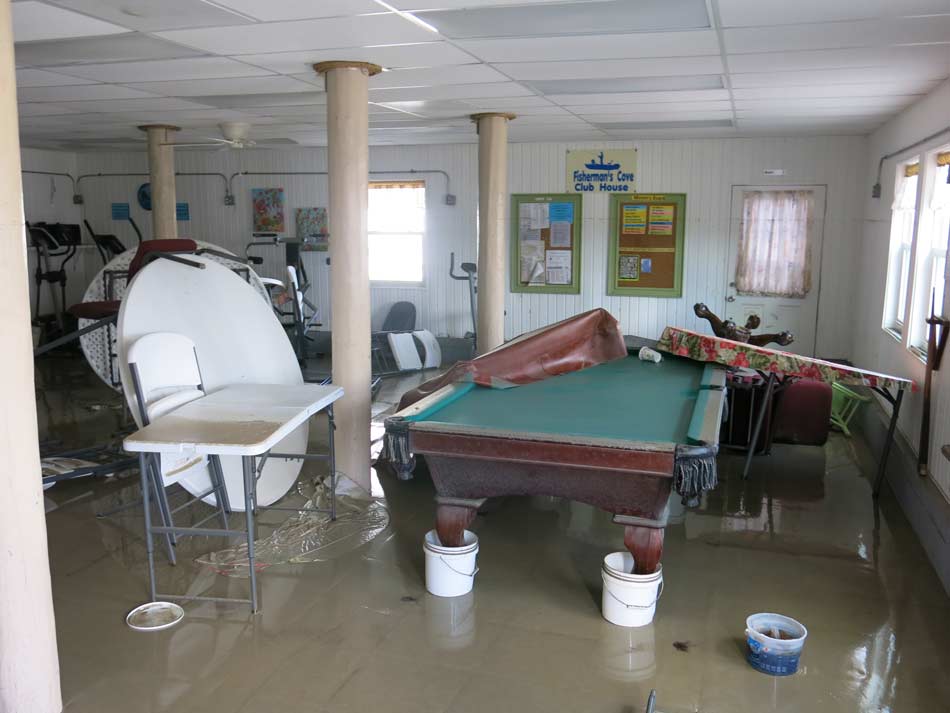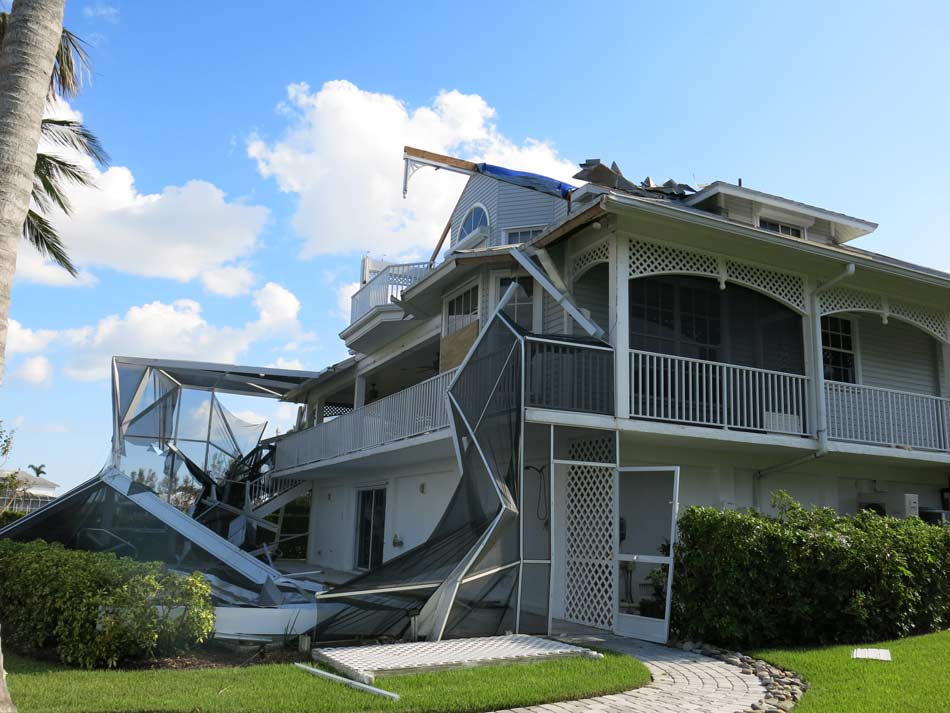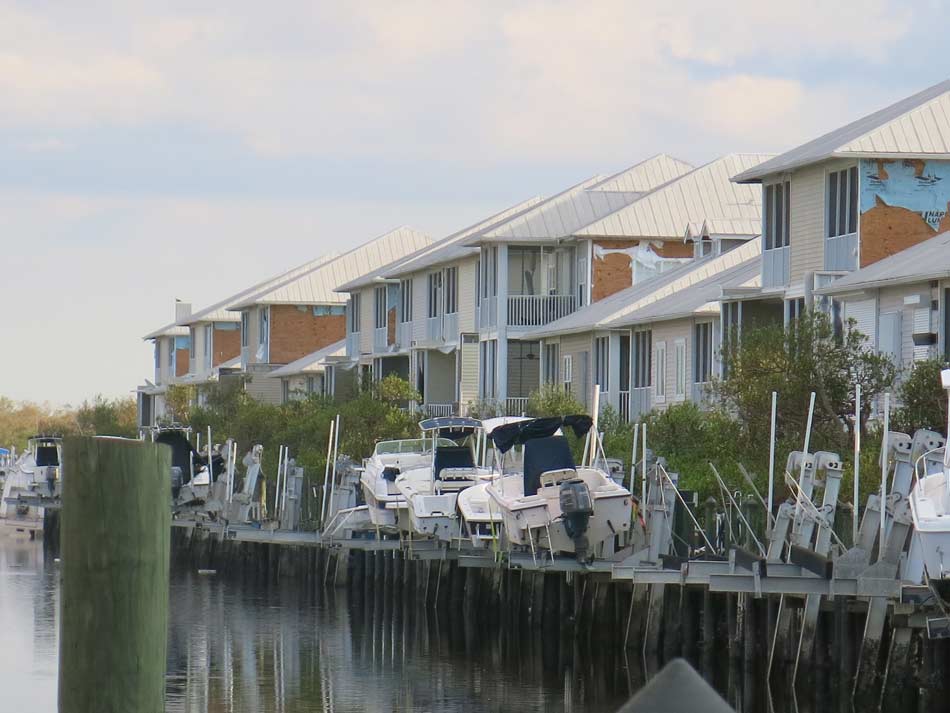On Saturday, September 16, an AIR damage survey team headed to southwest Florida to conduct damage surveys following Hurricane Irma’s second U.S. landfall on Marco Island. To the right of the eye at landfall were two smaller communities—Goodland, and Everglades City—which were hit particularly hard by both wind and storm surge. As the State of Florida is working overtime to restore electricity, water and some sense of normalcy to the vast majority of the state, some of the hardest hit areas are still in the dark. The Florida Keys are still not completely accessible even to residents and are a long way away from returning to business as usual.
Everglades City
Everglades City was hit fairly hard by surge and wind. Figure 1 illustrates the height of the surge inside a local club house where you can just make out the high water mark about two-thirds of the way up the walls. Literally the whole town was covered in muck and debris; residents, volunteers, and law enforcement were all working hard to clean up the devastation in Irma’s wake. From an exposure perspective, the town is designed to expect elevated flood-waters with many homes built on stilts or elevated platforms. Also, much of the mechanical equipment, such as AC units and electrical boxes, is elevated off the ground.

Marco Island
Marco Island is an affluent neighborhood of high-end custom homes. The island was up and running for the most part with electricity, gas, and grocery stores open for business. The frozen produce aisles in the grocery store were all empty due to the power loss which is common across the state. There was not much in the way of significant structural damage, but there were many instances of damage to roof coverings, missing tiles, and a few missing ridge caps and trim. In addition, almost every pool had an enclosure of some sort and most of these were damaged. In general the population was very well prepared in terms of mitigation features such as engineered shutters. There were many instances of soffit or flashing damage which caused water ingress and damaged roof insulation. I spoke with some home-owners who described water penetration through the soffits, which then damaged the interior. Figure 2 shows a particular location where there was significant pool enclosure damage as well as roof damage.

Goodland
Goodland is just to the east of Marco Island. Surprisingly, just as you enter Goodland there is a strip of newly built three story houses that are almost identical, each with a garage as the first floor. Every one of these homes had siding damage, screen room damage and more than 2 feet of surge in the garage. While they had engineered shutters, metal “hurricane rated roofs” and flood mitigation measures in place, there was still significant damage to their façades, which can allow water to enter the higher floors.

For this leg of the survey, I had the pleasure of working with Dr. Kurt Gurley and Dr. David Prevatt from the University of Florida’s Hurricane Research Center in Gainsville. Next up: the Florida Keys.
View our damage surveys from Harvey:



